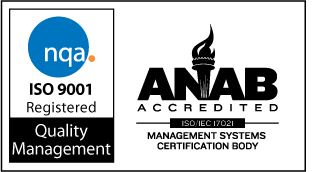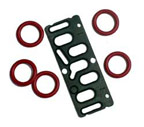
|
7108
S. Alton Way, Unit I |
(303) 758-2728
Home > Elastomers > Elastomer Processing 3
Elastomer
Processing
Part 3
Once the material is compounded, it is shaped into sheets and then molded.
Extrusion
 The
sheet compound is extruded into a configuration similar to the desired
finished part.
The
sheet compound is extruded into a configuration similar to the desired
finished part.
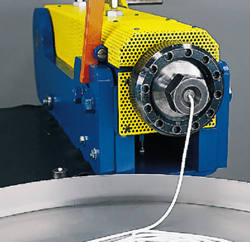 Clean Extrusion
Clean Extrusion
Molding
 Most
of the elastomeric O-rings used in the semiconductor industry are compression
molded. A preshaped form is inserted into a multi-section mold and transferred
to a heated press. Under heat and pressure, the elastomer flows into
the mold cavities and chemical cross-linking takes place (or begins
to take place, depending on the specific elastomer compound). After
a period of time ranging from several seconds to several minutes, the
parts are removed from the hot molds. Depending on the compound, mold
releases are often used. These diluted spray coatings are often a derivative
of fluoropolymers, or silicone-based polymers.
Most
of the elastomeric O-rings used in the semiconductor industry are compression
molded. A preshaped form is inserted into a multi-section mold and transferred
to a heated press. Under heat and pressure, the elastomer flows into
the mold cavities and chemical cross-linking takes place (or begins
to take place, depending on the specific elastomer compound). After
a period of time ranging from several seconds to several minutes, the
parts are removed from the hot molds. Depending on the compound, mold
releases are often used. These diluted spray coatings are often a derivative
of fluoropolymers, or silicone-based polymers.
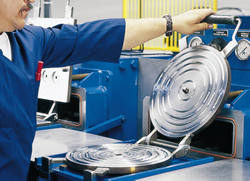 Compression Molding
Compression Molding
Flash Removal
 After
the parts are removed from the molds, they contain thin "flash"
as a result of the elastomer flowing in the multi-section mold. This
"flash" is typically removed by exposing the parts to a cryogenic
tumbling process. The elastomer is cooled and tumbled, causing the thinner
"flash" section to become brittle and break away from the
main part. Additional tumbling or handdeflashing may be required on
some part designs or compounds.
After
the parts are removed from the molds, they contain thin "flash"
as a result of the elastomer flowing in the multi-section mold. This
"flash" is typically removed by exposing the parts to a cryogenic
tumbling process. The elastomer is cooled and tumbled, causing the thinner
"flash" section to become brittle and break away from the
main part. Additional tumbling or handdeflashing may be required on
some part designs or compounds.
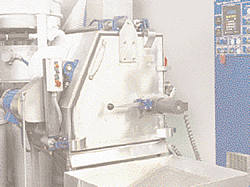 Cryo-deflash Unit
Cryo-deflash Unit
Curing
 Some
high-performance elastomers are subjected to a post-curing operation.
Elastomer parts are exposed to high temperatures in carefully controlled
environments for several hours to complete the curing process. Additionally,
this post-curing step removes excess water vapor and volatile process
additives, thereby improving vacuum and contamination performance.
Some
high-performance elastomers are subjected to a post-curing operation.
Elastomer parts are exposed to high temperatures in carefully controlled
environments for several hours to complete the curing process. Additionally,
this post-curing step removes excess water vapor and volatile process
additives, thereby improving vacuum and contamination performance.
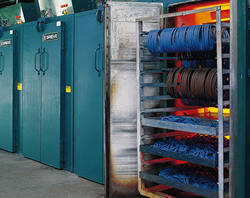 Post-cure
Ovens
Post-cure
Ovens
Next Topic Elastomer Processing Part 4
We are located in the Denver Technological
Center in a suburb of Denver, Colorado
©1997-2017, Problem Solving Products, Inc.
Website Map | Privacy Statement
| Terms of Use
